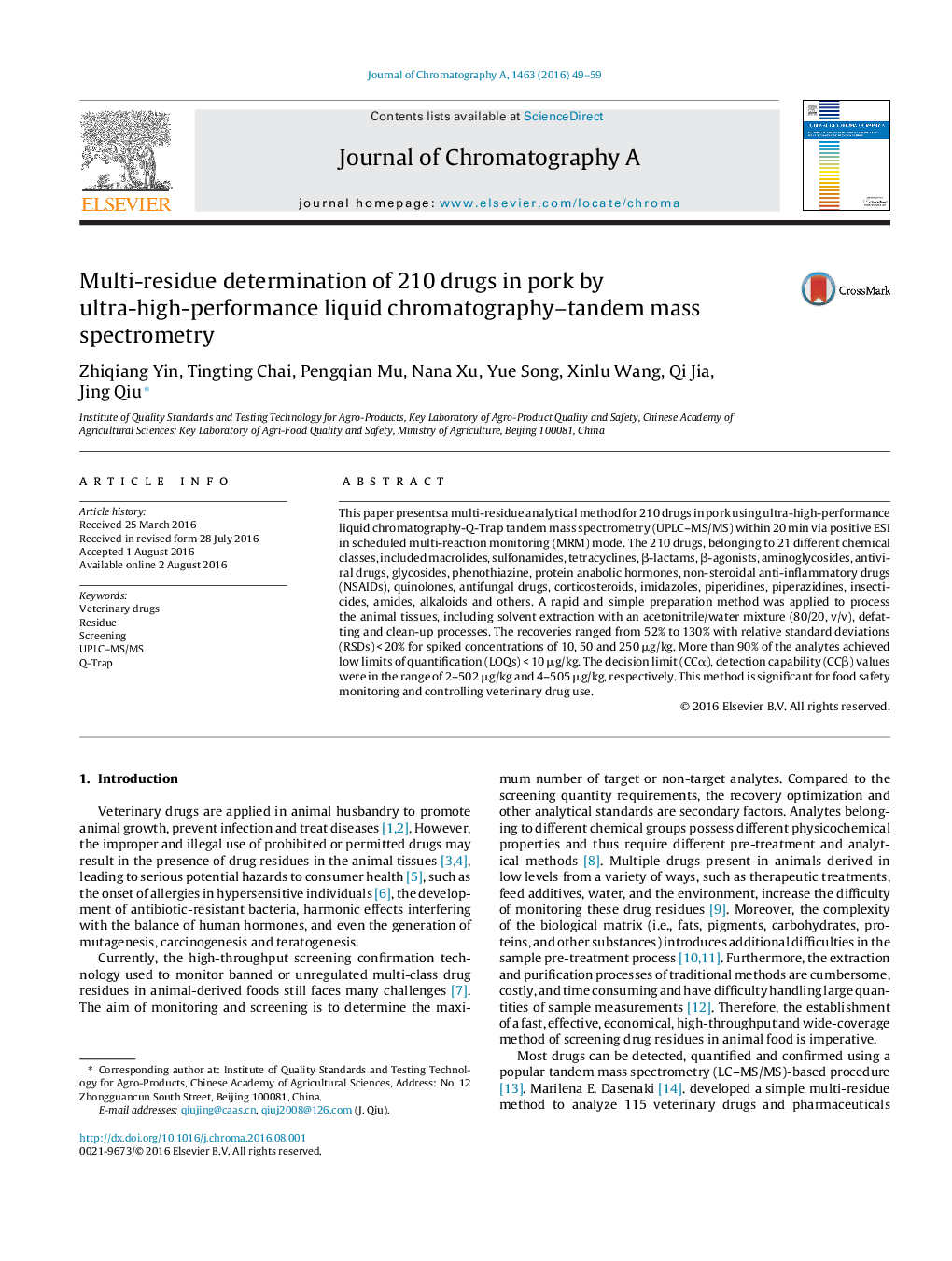| Article ID | Journal | Published Year | Pages | File Type |
|---|---|---|---|---|
| 1198330 | Journal of Chromatography A | 2016 | 11 Pages |
•21 classes chemicals in pork were simultaneously detected using UPLC-Q-Trap-MS.•210 veterinary drugs and therapeutic drugs for human were involved.•A rapid and simple sample preparation method was developed for pork.•More than 90% of the analytes achieved low limits of quantification <10 μg/kg.
This paper presents a multi-residue analytical method for 210 drugs in pork using ultra-high-performance liquid chromatography-Q-Trap tandem mass spectrometry (UPLC–MS/MS) within 20 min via positive ESI in scheduled multi-reaction monitoring (MRM) mode. The 210 drugs, belonging to 21 different chemical classes, included macrolides, sulfonamides, tetracyclines, β-lactams, β-agonists, aminoglycosides, antiviral drugs, glycosides, phenothiazine, protein anabolic hormones, non-steroidal anti-inflammatory drugs (NSAIDs), quinolones, antifungal drugs, corticosteroids, imidazoles, piperidines, piperazidines, insecticides, amides, alkaloids and others. A rapid and simple preparation method was applied to process the animal tissues, including solvent extraction with an acetonitrile/water mixture (80/20, v/v), defatting and clean-up processes. The recoveries ranged from 52% to 130% with relative standard deviations (RSDs) < 20% for spiked concentrations of 10, 50 and 250 μg/kg. More than 90% of the analytes achieved low limits of quantification (LOQs) < 10 μg/kg. The decision limit (CCα), detection capability (CCβ) values were in the range of 2–502 μg/kg and 4–505 μg/kg, respectively. This method is significant for food safety monitoring and controlling veterinary drug use.
